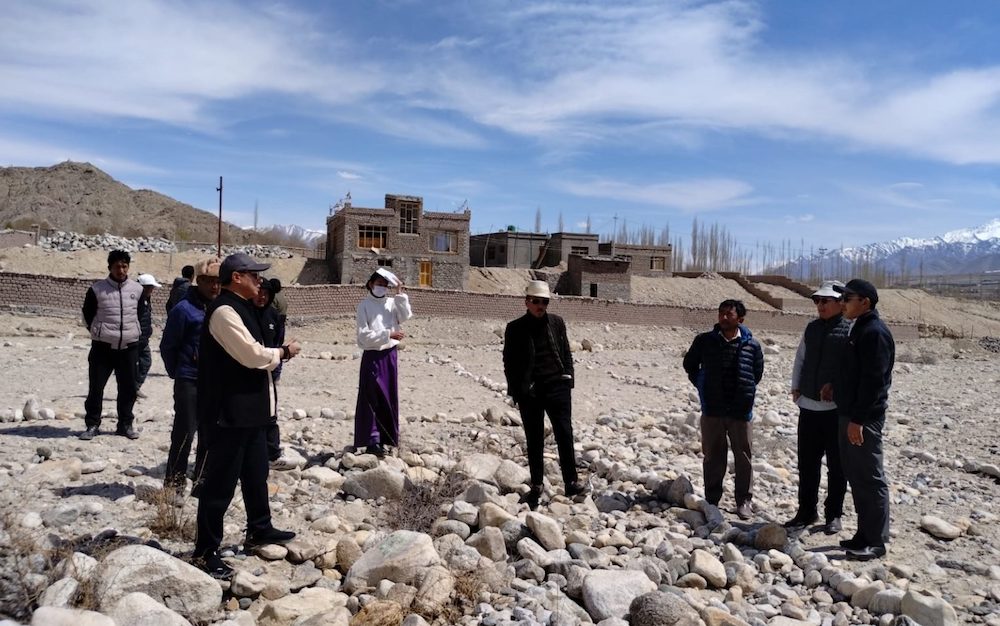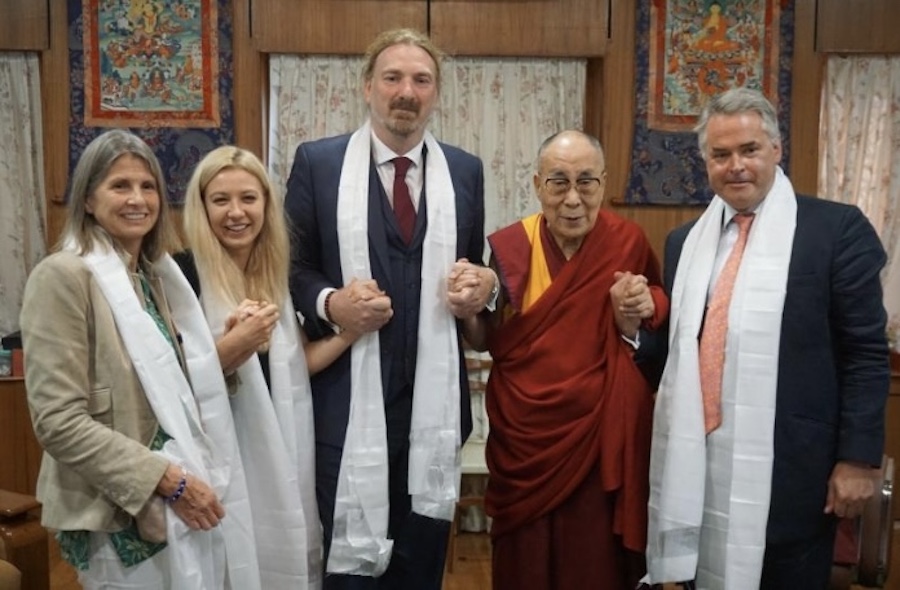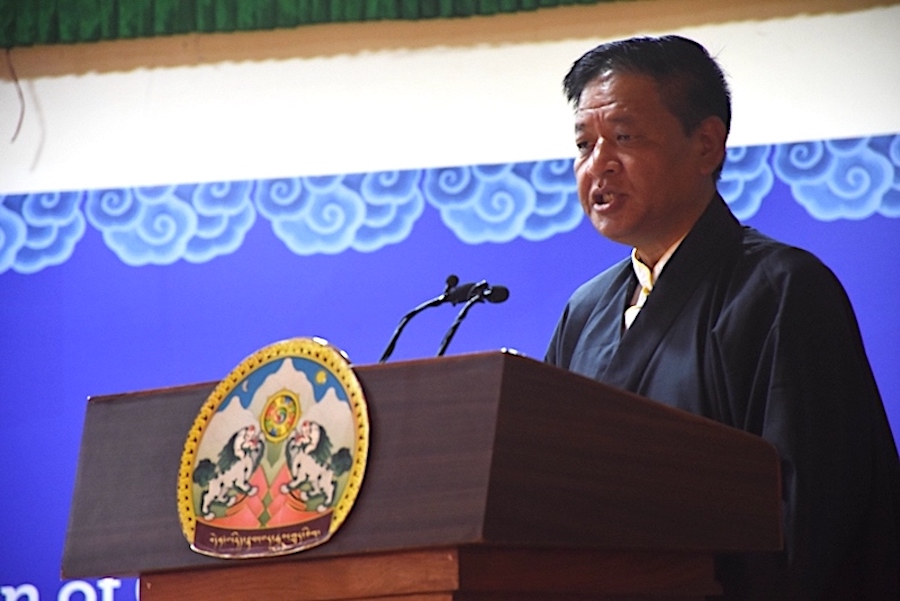By Nissar Bhatt
Some events are really hard to forget throughout life. Imagine a place where you are being surrounded by tall and big mountains with dense forests. Seeing from your room the whole panorama of the beauty that nature has been kind enough to create with utmost care and caution, some inner feelings in you spontaneously compel you to go on writing pages after pages eulogizing the beauty of nature. But then looking towards the other side of the storey, you find it hard to stop your tears at the plight of others in this beautiful atmosphere. This is something that I had to experience during my stay in Dharamsala this week. I had been to Dharamsala, Himachal Pradesh, for attending a workshop on peace building in conflict situations. The room where I am staying for more than a week now is in the lap of tall mountains and bushy forests. Presently it is monsoon here and one enjoys a lot in sun and shower amid the scenic beauty of this hill station. The white clouds are roaming around you here and there and sometimes reducing the visibility to such an extent that you could not see a person just ten feet away. The tall mountains it seems are impatient to caress the blue skies and the rain brings a unique joy with it.
The roads leading to my room are so tortuous that it really needs an extraordinary skill for a driver to negotiate the serpentine curves. Whether you observe deeply or not, the natural beauty of this place has such a unique mesmerizing force in it that it leaves indelible marks on you that you cannot forget this place ever. Amid this charming environment, witnessing the sighs and sorrows of a community that had been exiled from its homeland since half a century ago is something that is really paining and heart-rending. The whole area of Dharamsala is a Tibetan settlement developed more than forty years ago. Tibetans have scattered all over India perhaps waiting for the day when they would find a chance to see their homeland. China’s communist troops started invading the northeastern parts of Tibet as early as in 1949. Their mission of occupation was complete in 1959. Since then Tibet is under China’s occupation. Human rights groups have many times expressed their concern over what is going on presently in Tibet. India for its border proximity with China became one of the largest receiver of Tibetan refugees. With the arrival of Dalai Lama Tibetans spiritual leader – to India, Tibetans found India as the most convenient and suitable place for their refuge. The government of India welcomed the community by giving some areas to it for stay. Presently there are more than 127 Tibetan settlements in India and Dharamsala is one among them. Apart from protecting their unique and distinct religious and cultural heritage, the community at the very beginning of their arrival over hear was deeply concerned about the future of their children. The most critical need that was felt by this community that could ensure the safety of their cultural identity was to impart quality education to their children. Leaving ones homeland does not only create the problem of displacement, it actually create a whole bunch of problems that can even pose danger to the identity of a full community. Immigration from Tibet might have caused a lot of problems for this community but their first attention went to arrange for education of their children. His holiness the Dalai Lama recognizing the importance of education among the children and young generation had proposed that a center for destitute children be established in Dharamsala. At the beginning it was the sister of Dalai Lama who had volunteered to look after the children of those who had got killed or could not support the education of their wards for economic purposes. From its humble beginning forty years ago, Tibetan Children’s Village (TCV) has been able to develop into a full-fledged higher secondary school with its branches all through the country. Presently the number of branches has gone more than 80 and the institution has been able to expand its wings to the neighbouring countries of India like Nepal. The institution is imparting education among others to destitute Tibetan children in exile, as well as those escaping from Tibet in recent years. Tibetans are living a life of misery in Tibet. Their counterparts in India are trying to invite world attention towards the miseries that are being faced by their community members in Tibet. Though initially they were demanding total freedom from China but presently it is believed that the Dalai Lama is ready to settle down on greater autonomy for Tibet. Presumably there are certain pockets within the community that do not support this political stand of the Dalai Lama. Their want that Tibetans should opt for complete freedom. In the contemporary changing political equations in the world the community did not see anything helpful for it. Recent visit of Vajpayee to China in which the prime minister of India showed some flexibility over China’s official position on Tibet is something that has caused a considerable resentment among the community. Though the community is fighting for last more than fifty years unabatedly with their non-violent methods against China’s occupation of their homeland, it has apparently not been able to capture attention of the international community. The reason could be China’s veto power position in the United Nations Security Council.
Though many Tibetans are hopeful that the united nations resolutions that have reportedly been passed by the U.N. calling upon China to stop human rights abuses in Tibet and respect the unique and distinct Tibetan religious and cultural heritage would help them someday, it is again China’s strong position in the world community that makes the members of this community highly skeptic about the role the world community could play. TCV at Dharamsala has presently more than two thousand students including at least 23 infant orphans. The school takes all the care of these infants as also the students who are destitute. After passing their 12 class from the institution, it is again the TCV that takes care of these students and do arrange admissions for them in different colleges of the country. It is believed that in 1963 children would be taken to Dal Lake a small lake in the vicinity of the School – to play there as there was no ground of the school. Since then the school has expanded to a large extent. The school at present is having a big playground as also a basketball ground. Other than education, children are also being provided with the training of knitting, stitching, etc. The school is receiving its students presently from Kullu, Sikkim, Bhutan and Nepal. There is certainly a lesson for the people living in conflict situations that can be taken from the indefatigable efforts of this community. Among the present crucial challenges that the community faces, it is the release of Panchan Lama that is considered as the important one. Panchan Lama is the second religious authority in Tibet after Dalai Lama. He has been kidnaped by the Chinese troops in his early age of 5 years. Presently he is about 13 years old. Though the community is trying to get the world support for the release of Panchan Lama the prisoner of conscience – so far their efforts could not bear any fruits.
Nissar Bhatt is a columnist for www.greaterkashmir.com and can be contacted at nissarbhatjk@rediffmail.com









